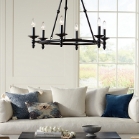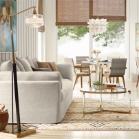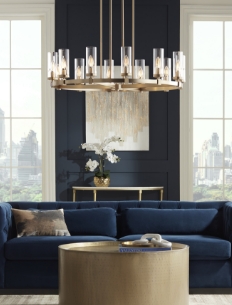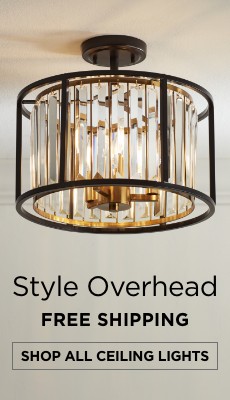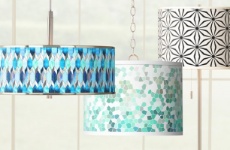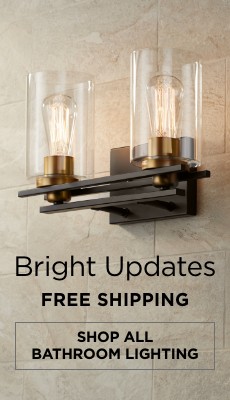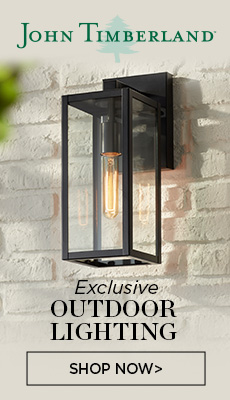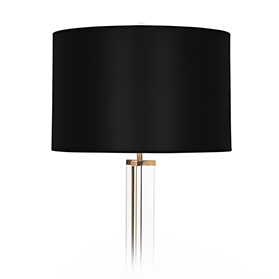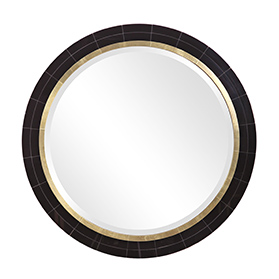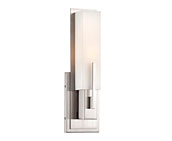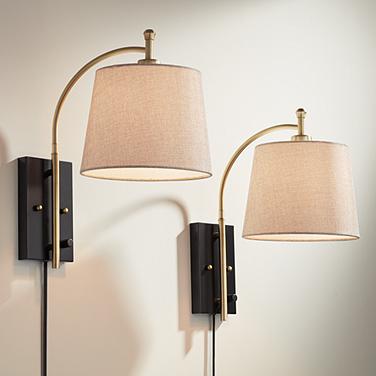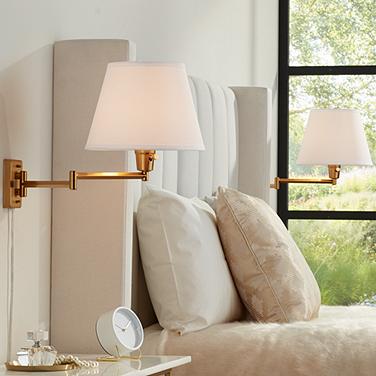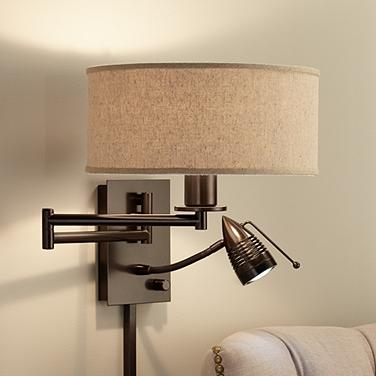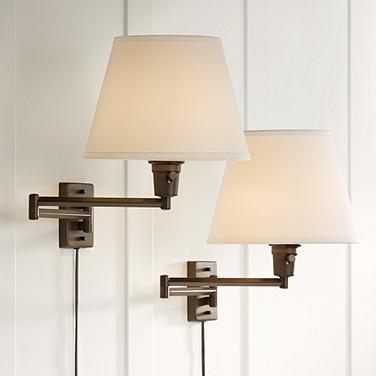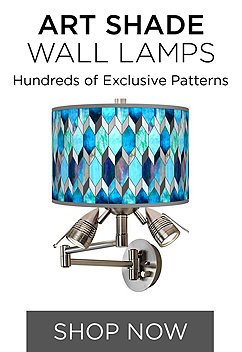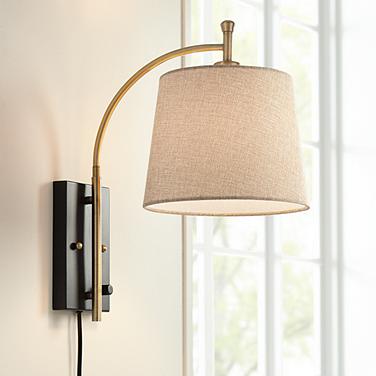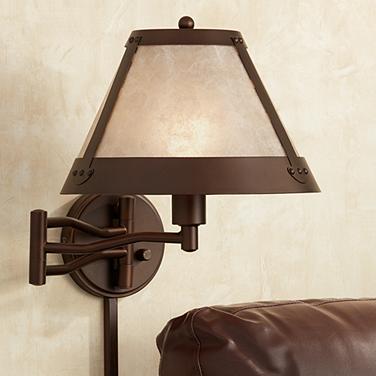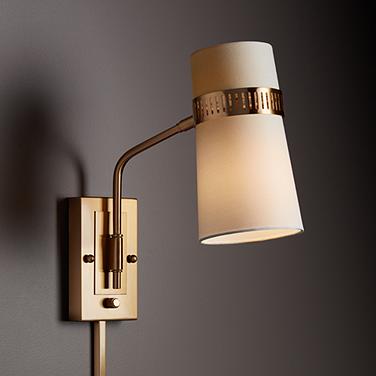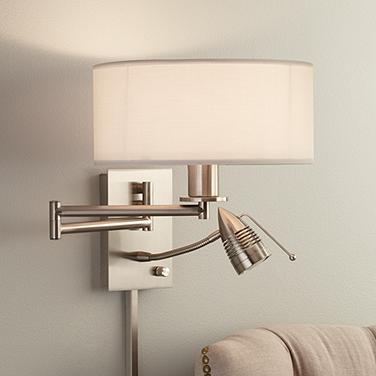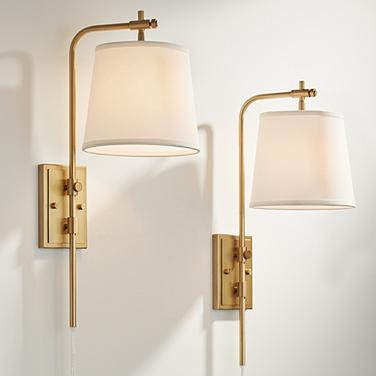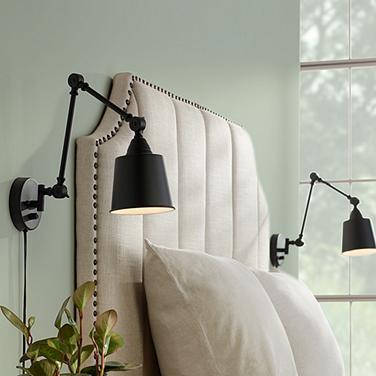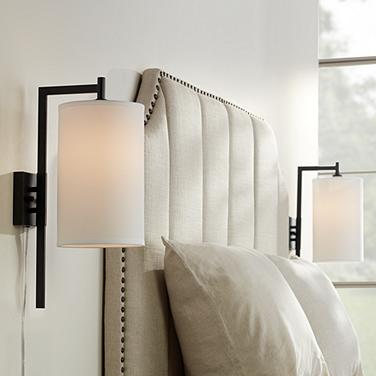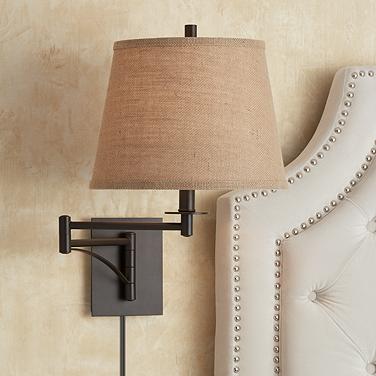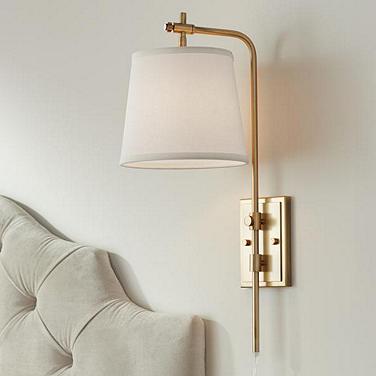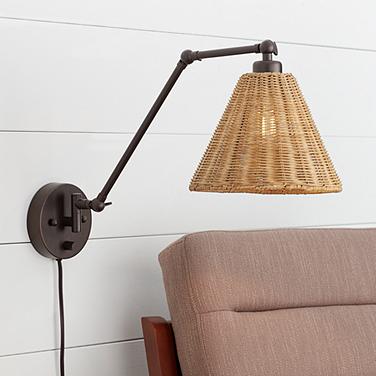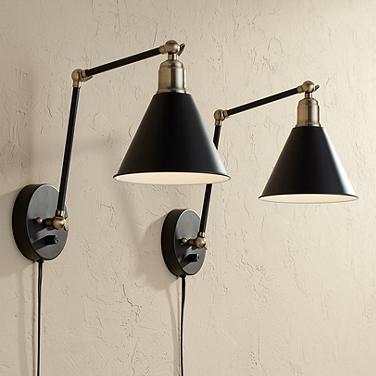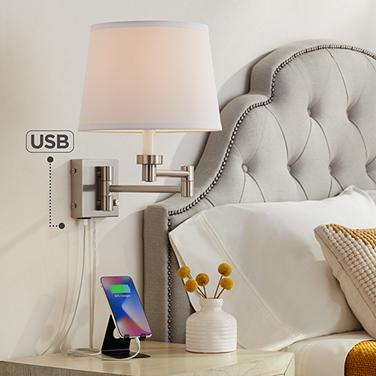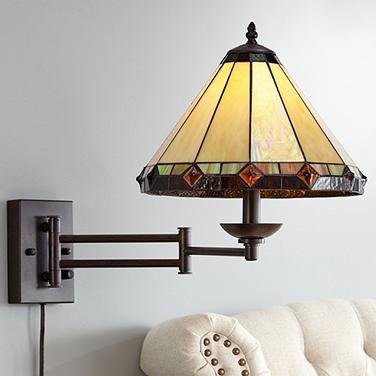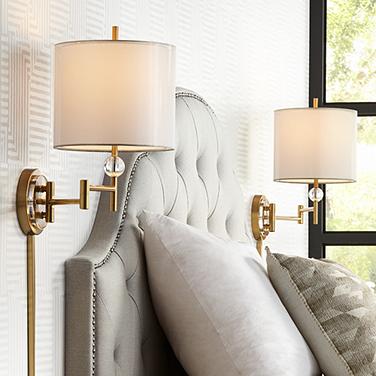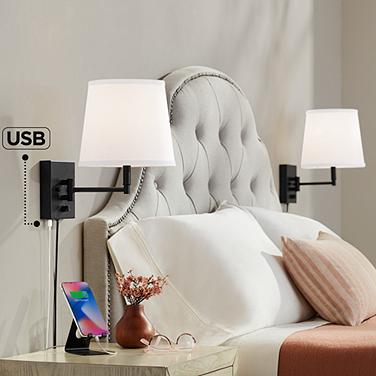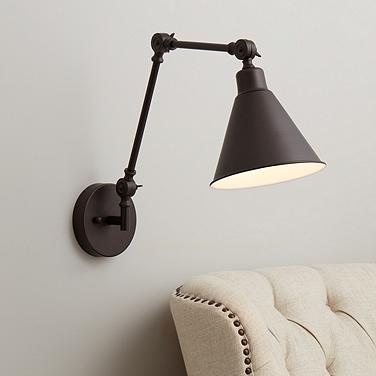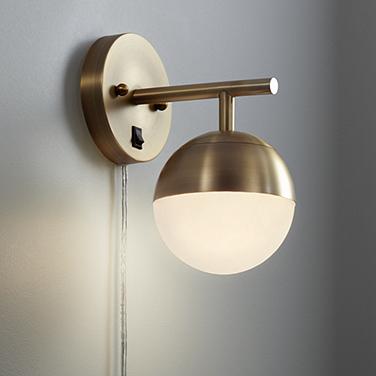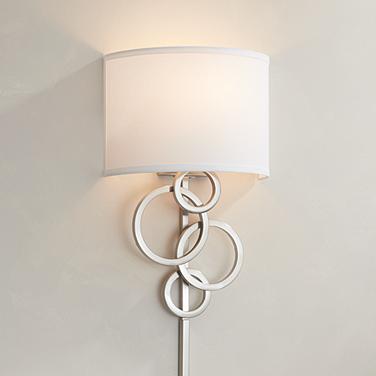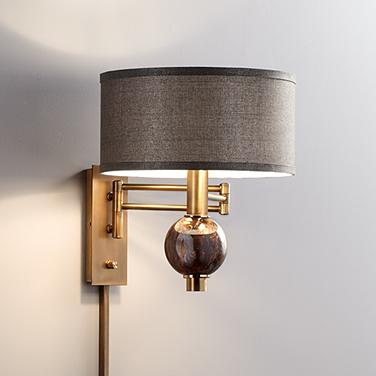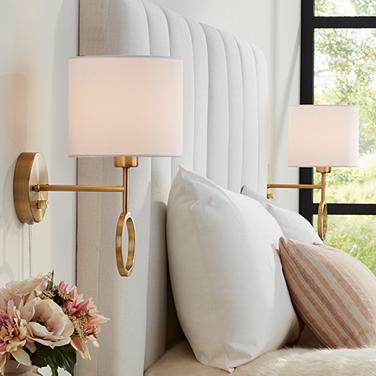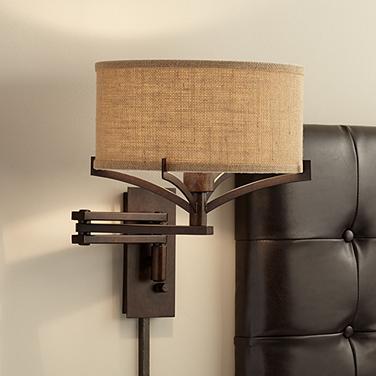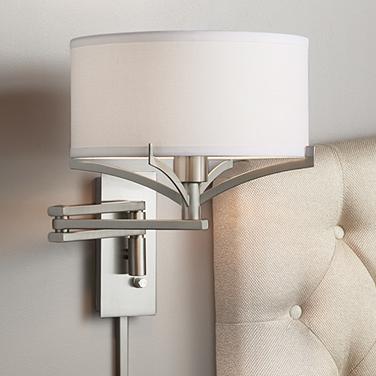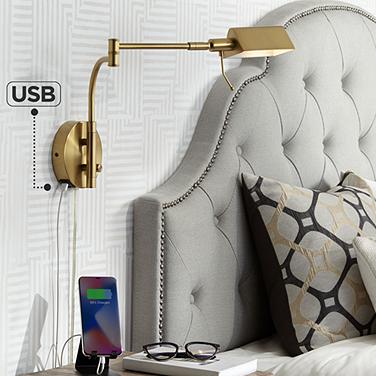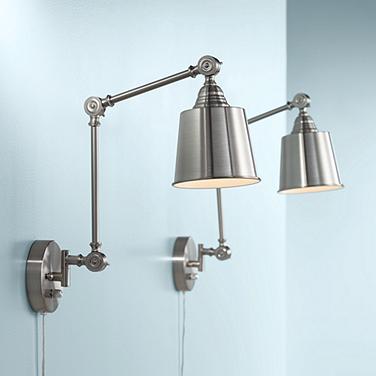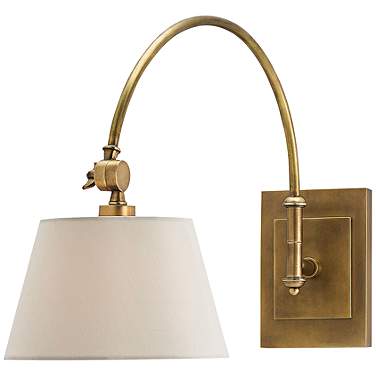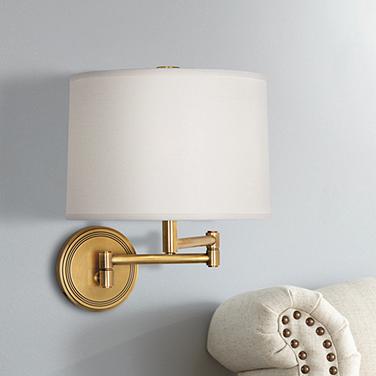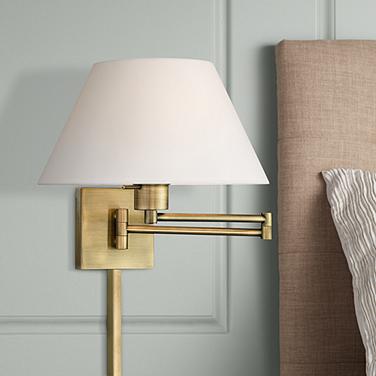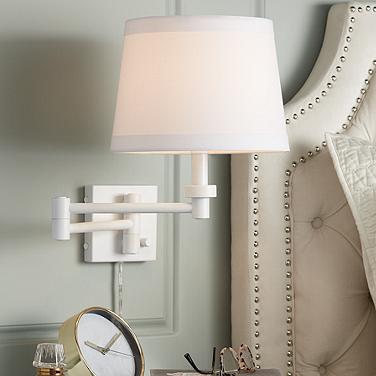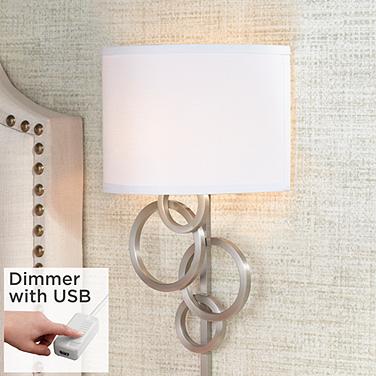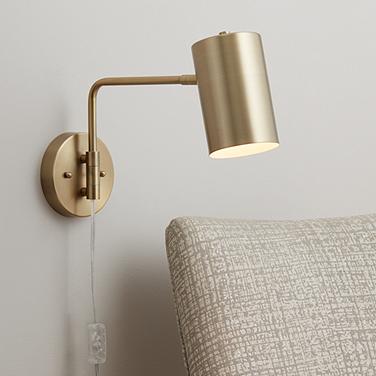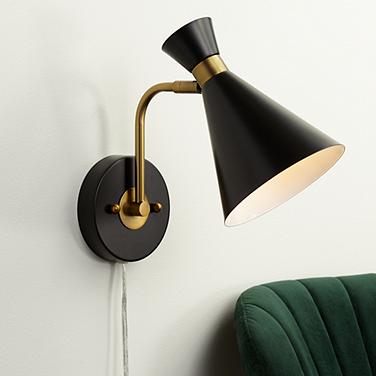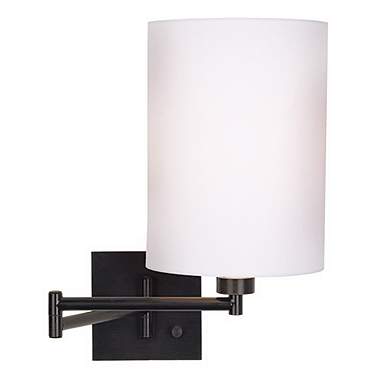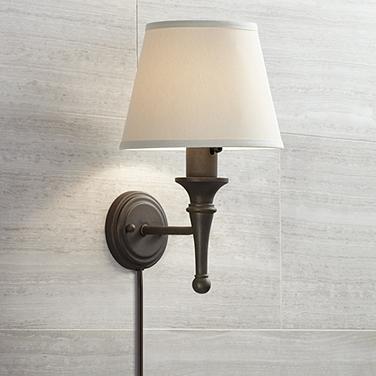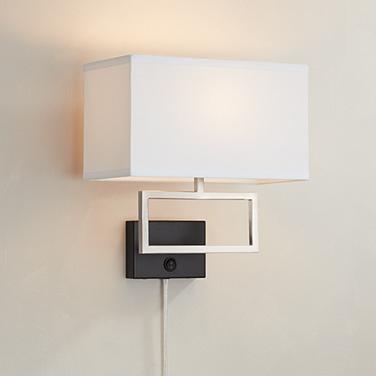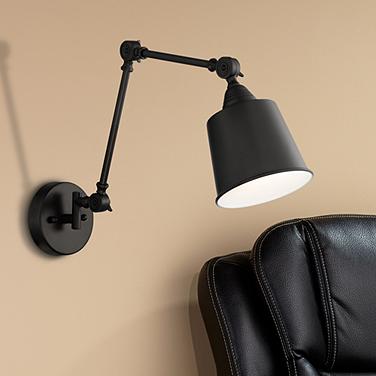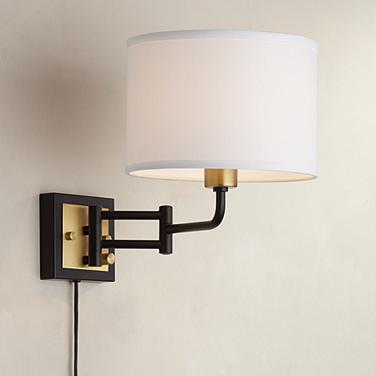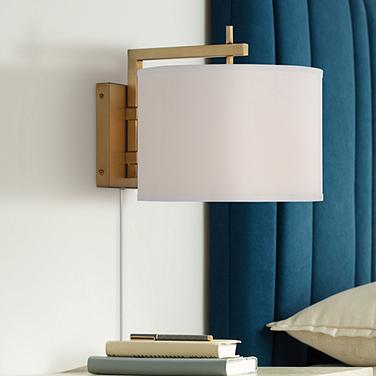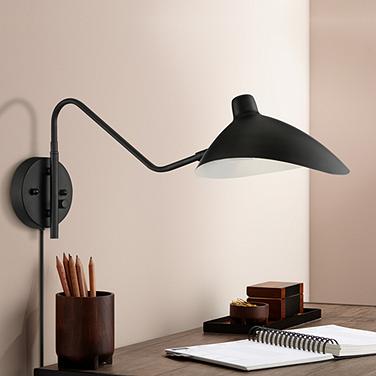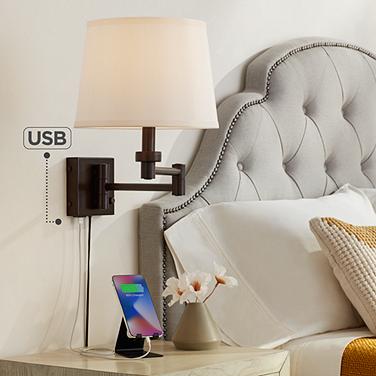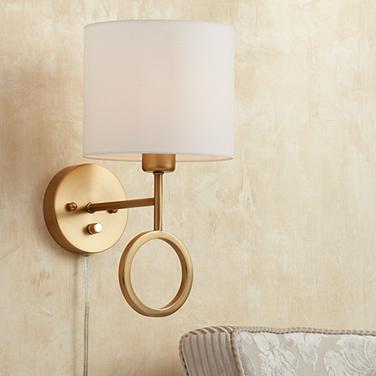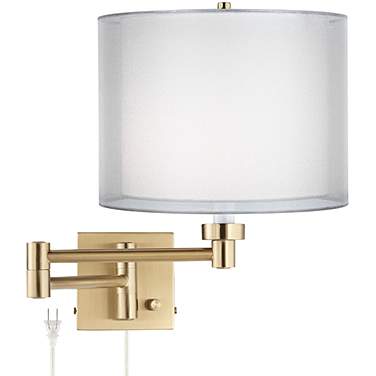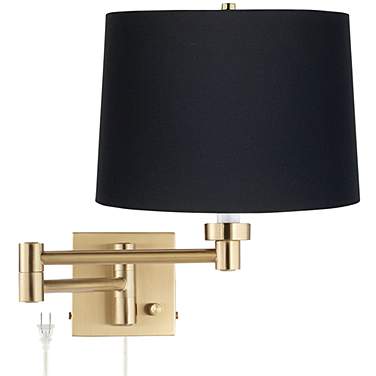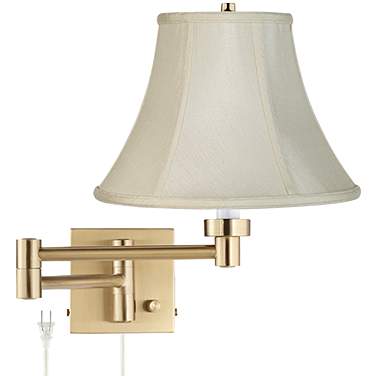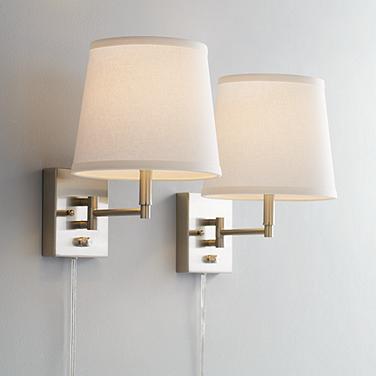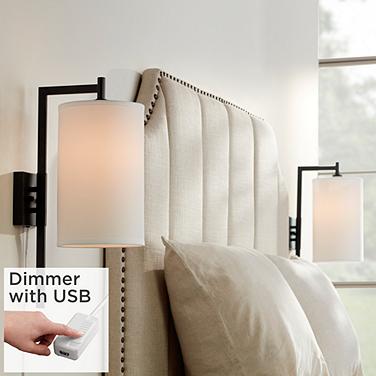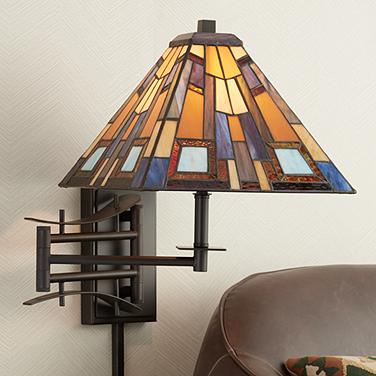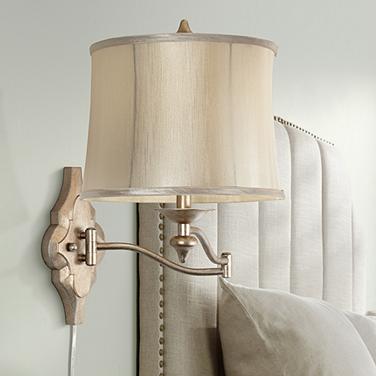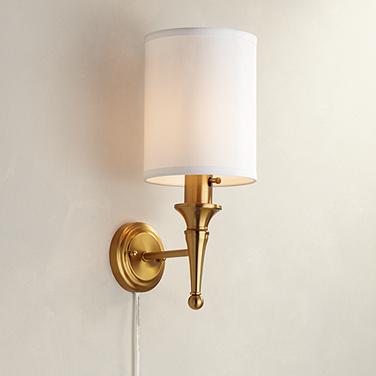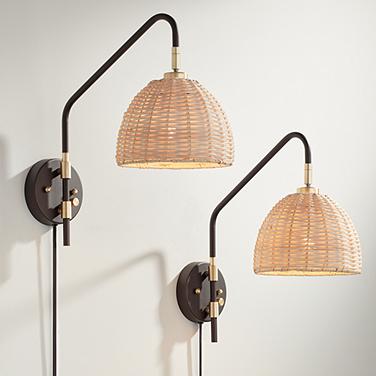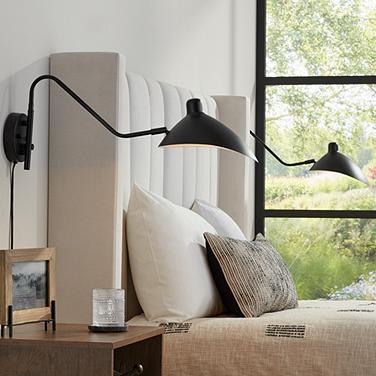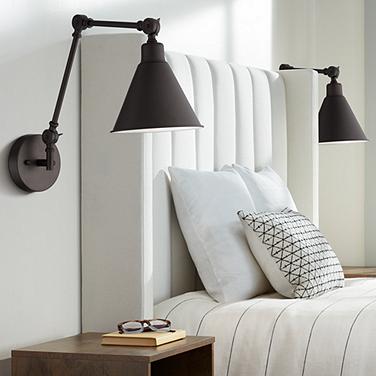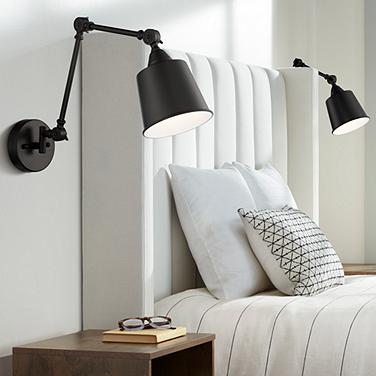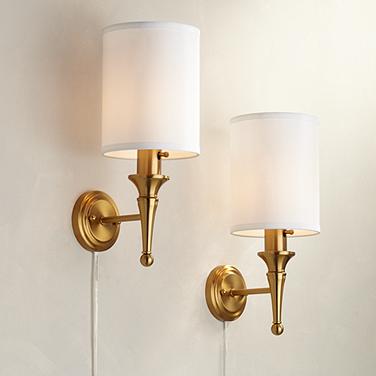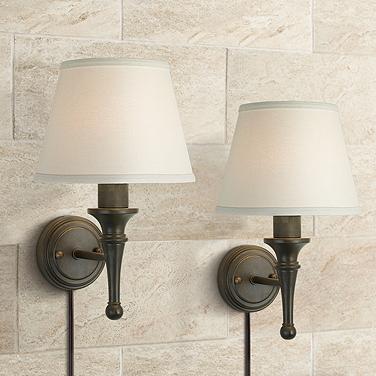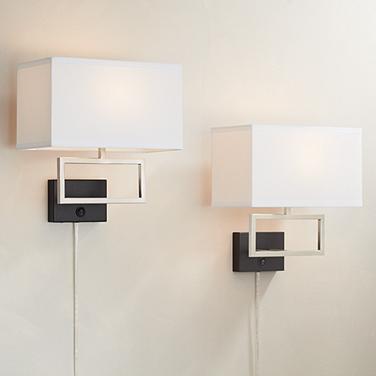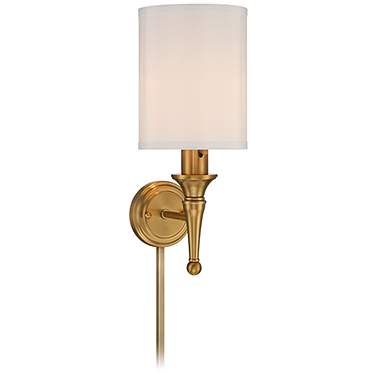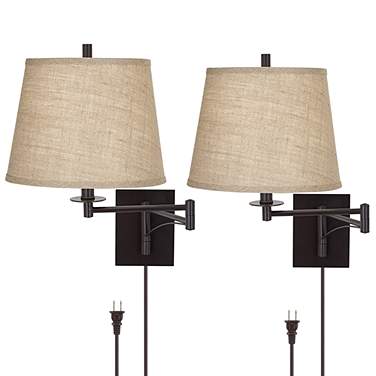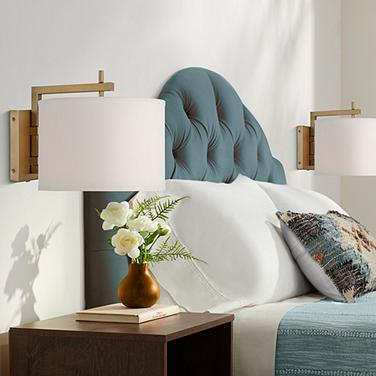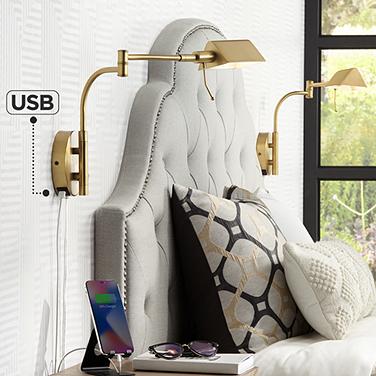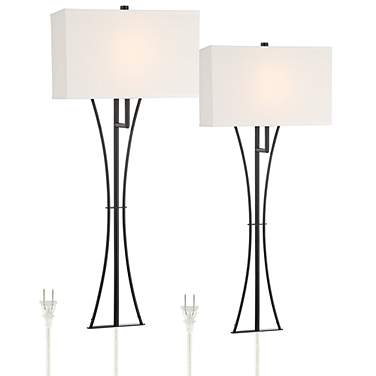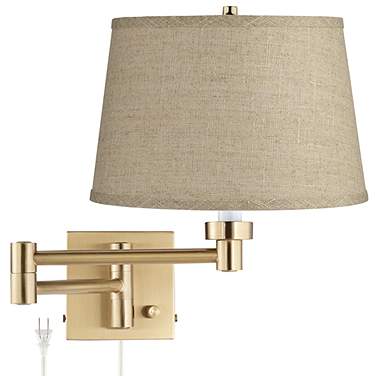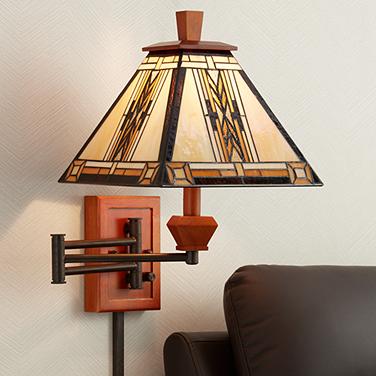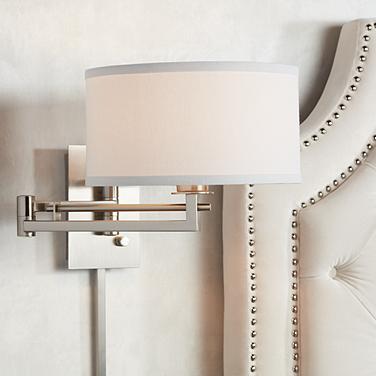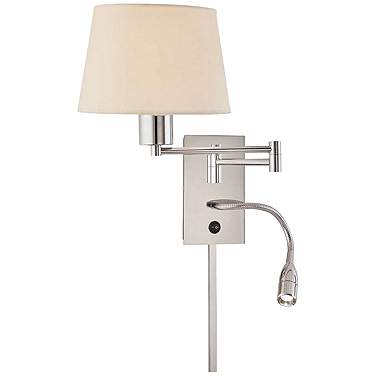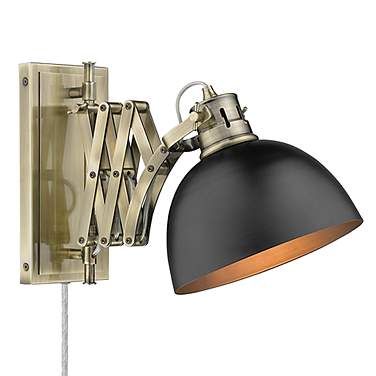Wall Lamps
957 resultsFree Shipping* on our wall lamps. Shop our complete selection of wall mounted designs to find a fabulous wall lamp for the bedside, reading chair or anywhere.
-
- On Sale
- Daily Sales
- Clearance Items
- Open Box
-
- 360 Lighting
- Access
- Barnes and Ivy
- Besa
- Cal Lighting
- Cerno
- Crystorama
- Currey and Company
- Designers Fountain
- Franklin Iron Works
- George Kovacs
- Giclee Gallery
- Giclee Glow
- Golden Lighting
- Hinkley
- House Of Troy
- Hudson Valley
- Innovations Lighting
- Jonathan Adler
- Kathy Ireland
- Kichler
- Koncept
- Lite Source
- Livex Lighting
- Maxim
- Minka Lavery
- Mitzi by Hudson Valley
- Possini Euro Design
- Regency Hill
- Regina Andrew
- Robert Abbey
- Robert Louis Tiffany
- Uttermost
- WAC
-
- New Items
- Most Popular
- Free Shipping
- Ships Same Day
- Lamps Plus Exclusive Product
- Lamps Plus Non Exclusive Product
Looking for something specific?Search our site:
What Are Wall Lamps?
Wall lamps, also known as wall sconces or wall lights, are lighting fixtures designed to be mounted on walls. They provide illumination while conserving floor space, making them ideal for areas where space is limited or where traditional floor or table lamps may not be practical. Wall lamps typically consist of a base or backplate that attaches to the wall, an arm or support structure, and a light fixture such as a lampshade or bulb holder. Wall lamps come in a variety of styles, sizes, and designs, ranging from modern and minimalist to ornate and traditional. Wall lamps can serve various functions, including providing task lighting for reading or working, ambient lighting for creating atmosphere, or accent lighting for highlighting architectural features or artwork. They are commonly used in living rooms, bedrooms, hallways, and entryways, as well as outdoor spaces such as porches and patios. With their versatility and aesthetic appeal, wall lamps add both functionality and style to any space.
Why Are Wall Lamps So Popular?
Wall lamps are popular for their versatility, functionality, and aesthetic appeal. They provide targeted illumination without taking up floor space, making them ideal for rooms with limited space or where floor lamps and table lamps may not be practical. Wall lamps come in a variety of styles, designs, and finishes, allowing users to find options that complement their decor and personal taste. Additionally, wall lamps can serve as decorative accents that enhance the ambiance of a room, adding both style and functionality to any space.
How Do Wall Lamps Improve Your Home?
Wall lamps improve your home in several ways. Firstly, they provide focused illumination for tasks such as reading, working, or highlighting artwork or architectural features. By directing light upwards, downwards, or sideways, wall lamps can create a warm and inviting atmosphere, enhancing both the functionality and aesthetics of a room. Additionally, wall lamps can serve as space-saving solutions, particularly in smaller rooms or areas where floor or table lamps may not be practical. They can also add visual interest to plain walls, serving as decorative elements that complement existing furnishings and decor.
Best Room For A Wall Lamp
The best room for a wall lamp depends on its intended use and the layout of your home. However, certain rooms typically benefit more from the addition of wall lamps. Living rooms are ideal spaces for wall lamps, particularly for providing ambient or accent lighting and highlighting artwork or architectural features. Bedrooms also benefit from wall lamps, particularly as bedside lighting solutions that free up space on bedside tables for other items. Hallways, entryways, and staircases are also well-suited for wall lamps, providing both functional illumination and visual interest in high-traffic areas. Ultimately, the best room for a wall lamp is one where it enhances both the functionality and aesthetics of the space, creating a well-lit and inviting environment.
What to Consider Before Buying A Wall Lamp
Before buying a wall lamp, consider factors such as:
Finishes
Wall lamps come in a variety of finishes, ranging from sleek metallic options like chrome or brushed nickel to warmer finishes such as bronze or antique brass. The choice of finish can significantly impact the lamp's aesthetic, allowing it to seamlessly blend with existing décor or stand out as a focal point.
Height
The height at which you mount a wall lamp depends on the intended purpose and the specific requirements of the room. Generally, wall lamps are mounted at eye level for optimal illumination and visual appeal. Consider factors like furniture placement and the function of the lighting to determine the appropriate height. If your design is adjustable, make sure that the wall lamp height allows you to easily reach and position the light.
Colors
The color of a wall lamp can influence the overall look of a room. Whether you prefer neutral tones that seamlessly integrate into the background or bold, contrasting colors that make a statement, selecting the right color ensures that the wall lamp complements the existing color palette and design scheme of the space.
Styles
Wall lamps come in various styles to suit different tastes and interior design themes. From modern and minimalist designs to vintage or ornate options, the style of a wall lamp can contribute to the overall ambiance of a room. Consider the existing décor and choose a style that enhances the visual appeal of the space.
Types
There are different types of wall lamps, including swing-arm lamps, sconces, and picture lights. Each type serves a specific purpose, whether it's providing adjustable task lighting, accentuating artwork, or offering ambient illumination. Choose the type of wall lamp that aligns with your functional and aesthetic preferences.
Number of Lights
Wall lamps can feature a single light source or multiple lights. The number of lights affects the brightness and distribution of illumination. Consider the intended use of the lamp and the size of the space when determining how many lights you need on your wall lamp.
Width
The width of a wall lamp is crucial for both aesthetic balance and practicality. It should be proportionate to the size of the wall and other elements in the room. A well-chosen width ensures that the wall lamp complements the space without overwhelming it or appearing too small.
How to Choose the Correct Wall Lamp Size
Choosing the right size for a wall lamp involves considering several factors to ensure it complements your space and provides adequate lighting. Firstly, assess the size of the wall where the lamp will be mounted. A larger wall may accommodate a larger or more substantial lamp, while a smaller wall may require a more compact option to avoid overwhelming the space. Secondly, consider the intended function of the lamp; if you need task lighting for reading or working, opt for a lamp with a larger light output and adjustable features. For ambient or accent lighting, a smaller lamp may suffice. Lastly, take into account the overall proportions of the room and surrounding furnishings to ensure the lamp fits seamlessly within the space without appearing disproportionate or out of place.
How High Should You Hang A Wall Lamp
The height at which you hang a wall lamp depends on its intended function and the layout of your space. As a general guideline, wall lamps used for task lighting, such as reading lamps or bedside sconces, should be mounted with the bottom of the lampshade at eye level when seated or lying down. This ensures comfortable illumination without glare or shadows. For ambient or decorative lighting, wall lamps can be mounted higher on the wall to create a wash of light or highlight specific architectural features. Ultimately, the ideal height for hanging a wall lamp is one that balances functionality, aesthetics, and practicality within the context of your space.
How To Install A Wall Lamp
Installing a wall lamp requires careful planning and attention to detail to ensure safe and secure installation. Begin by determining the location for the lamp, considering factors such as wiring access, stud placement, and desired height. Use a stud finder to locate the studs in the wall and mark their positions. Next, turn off the power to the circuit where the lamp will be installed at the circuit breaker. Carefully mount the mounting bracket or backplate to the wall using screws and anchors as needed, ensuring it is level and securely attached to the wall.
If wiring is required, follow the manufacturer's instructions to connect the wires from the lamp to the electrical box, ensuring proper connections and using wire nuts to secure them in place. Once the wiring is complete, attach the lamp fixture to the mounting bracket or backplate according to the manufacturer's instructions, securing it in place with screws. Finally, turn the power back on at the circuit breaker and test the lamp to ensure it is functioning properly. Adjust the lamp's position or angle as needed to achieve the desired lighting effect. If you're unsure about any step of the installation process, consult a qualified electrician for assistance.
Choose The Right Wall Lamp For You
Selecting the perfect wall lamp involves considering several factors to ensure it complements your space and meets your lighting needs. Begin by assessing the overall style of your room and choose a lamp that harmonizes with your existing decor, whether it's modern, traditional, or eclectic. Next, determine the primary function of the lamp—whether you need task lighting for reading or working, ambient lighting for creating atmosphere, or accent lighting for highlighting artwork or architectural features.
Consider the size and scale of the wall where the lamp will be mounted, ensuring it fits proportionally within the space without overwhelming it. Pay attention to mounting options, lighting technology, and your budget when making your selection. Ultimately, by considering these factors and your personal preferences, you can choose a wall lamp that not only provides functional lighting but also enhances the beauty and ambiance of your space.

